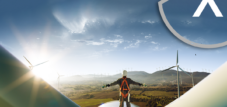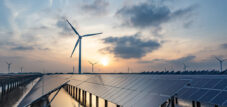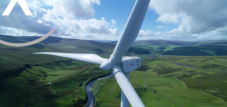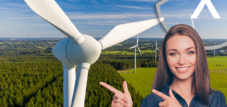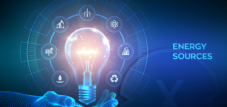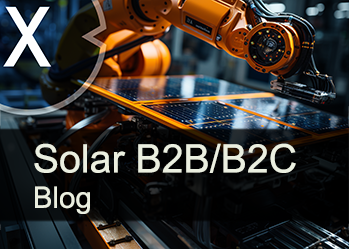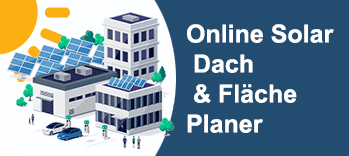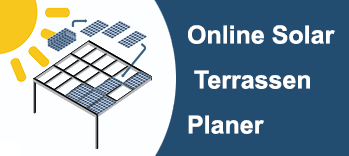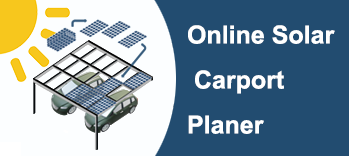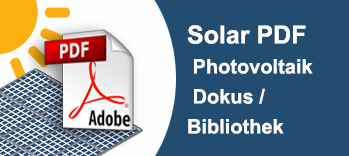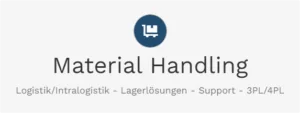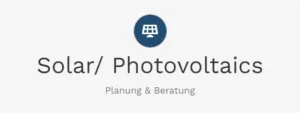Wind power in transition: Recycling as an opportunity rather than a problem – What actually happens to wind turbines after they have been used up?
Xpert pre-release
Language selection 📢
Published on: September 15, 2025 / Updated on: September 15, 2025 – Author: Konrad Wolfenstein

Wind power in transition: Recycling as an opportunity rather than a problem – What actually happens to wind turbines after they've been shut down? – Image: Xpert.Digital
From wind turbine to playground: The ingenious second career of old rotor blades
Wind power myth debunked: Why old rotor blades are no longer a waste problem
This question concerns both proponents and critics of wind energy. After about 20 to 25 years, wind turbines reach the end of their economic lifespan. Recycling most components is already straightforward – steel, copper, and concrete can be recycled in established ways. The primary challenge lies with the rotor blades, which are made of composite materials that are difficult to separate.
How many rotor blades need to be recycled in Germany?
Germany is facing a significant wave of dismantling. At the turn of the year 2020/2021, the 20-year EEG subsidy for approximately 5,200 wind turbines ended, and another 8,000 turbines will follow by the end of 2025. According to industry estimates, approximately 25,000 rotor blades will have to be dismantled by 2030, corresponding to approximately 400,000 tons of material.
These materials are largely made of glass-fiber-reinforced plastic (GRP), a durable but challenging composite material. The rotor blades account for only about 5 percent of the total weight of a wind turbine, while up to 90 percent of the other components can already be recycled into established recycling cycles.
What specific recycling processes already exist?
The industry has developed four main recycling routes, some of which are already industrially established:
The mechanical-thermal process uses cement plants as recycling sites. Companies like Holcim have already implemented successful concepts. The rotor blades are first crushed, the glass fibers replace aggregates, and the resin components provide energy for the cement production process. This method is already industrially scalable and economically established.
Holcim GmbH's Lägerdorf cement plant in Schleswig-Holstein recently recycled shredded wind turbine blades as substitute fuel. This thermal recycling process can reduce CO2 emissions by replacing fossil fuels. By using 1,000 tons of recycled GRP, up to 450 tons of coal, 200 tons of chalk, and 200 tons of sand can be saved.
How does chemical recycling work for rotor blades?
Chemical recycling processes such as pyrolysis and solvolysis are still in development, but show promising potential. These processes separate composites into their basic components, allowing glass fibers and resins to be recycled.
Pyrolysis is particularly suitable for separating fibers from thermoset plastic matrices. The thick-walled fiber composite structures of rotor blades are treated at high temperatures in an inert atmosphere. The recovered fibers can be reused industrially after appropriate processing.
The RE_SORT research project is developing new pyrolysis technologies specifically for thick-walled fiber composite structures with wall thicknesses of up to 150 mm, such as those found in rotor blades. In addition to the recycled fibers, the resulting pyrolysis oils and pyrolysis gases can also be recycled industrially.
What does design for recycling mean for modern rotor blades?
The wind industry is already working on fundamentally recyclable rotor blades for future turbines. Siemens Gamesa has developed a solution called RecyclableBlade, which has been commercially available since 2022.
These RecyclableBlades utilize a special resin technology that allows the materials to be fully recycled at the end of their lifespan. Immersed in a mild acid solution, the resin dissolves at elevated temperatures, allowing the glass fibers, resin, wood, and metal to be separated and reused in other industries.
The first commercial offshore project using these recyclable rotor blades was implemented in the German Kaskasi wind farm in 2022. RWE, as operator, is now also using 132 RecyclableBlades for the Sofia project.
What role does Vestas play in the circular economy?
Vestas is pursuing a systematic approach with its goal of waste-free turbines by 2040. The company is working on two parallel initiatives: DecomBlades for existing rotor blades and CETEC for future circular economy solutions.
The CETEC project (Circular Economy for Thermosets Epoxy Composites) is developing a chemical recycling method that breaks down epoxy resins into their basic components. These can then be reused in the manufacture of new rotor blades, creating a fully circular system.
Vestas turbines are currently 85 percent recyclable. Blade recyclability is expected to increase to 50 percent by 2025 and to 100 percent by 2030.
What creative upcycling approaches are there?
In addition to industrial recycling processes, innovative upcycling projects are emerging that directly transform used rotor blades into new applications. The Dutch company BladeMade transforms rotor blades into street furniture, playgrounds, bus shelters, and infrastructure projects.
These applications take advantage of the special properties of rotor blades: They are extremely durable, weather-resistant, vandal-proof, and have a distinctive design. A single rotor blade can be cut into segments for various applications – the strongest section is used as a load-bearing structure, the tip as a bench, and the rounded sections as planters.
For example, 200 rotor blades can be used to build a one-kilometer noise barrier. These projects reduce CO2 emissions by up to 90 percent compared to conventional materials and give the rotor blades a second lifespan of 50 to 100 years.
How much material is actually lost through abrasion?
Rotor blade wear is a frequently discussed topic, but its dimensions are manageable. According to Fraunhofer IWES, erosion causes approximately 0.1 to 5 kg of material loss per rotor blade per year, depending on location, coating, and wind load.
These values are comparable to other technical systems – a truck tire loses approximately 2 kg of material per 10,000 km of travel. Offshore installations are subject to particularly strict environmental regulations, requiring documentation and regular inspections.
Fraunhofer IWES develops test methods for evaluating various coating systems and works on optimized films and coatings to minimize erosion-related losses while simultaneously improving aerodynamic properties.
New: Patent from the USA – Install solar parks up to 30% cheaper and 40% faster and easier – with explanatory videos!

New: Patent from the USA – Install solar parks up to 30% cheaper and 40% faster and easier – with explanatory videos! - Image: Xpert.Digital
At the heart of this technological advancement is the deliberate departure from conventional clamp fastening, which has been the standard for decades. The new, more time- and cost-effective mounting system addresses this with a fundamentally different, more intelligent concept. Instead of clamping the modules at specific points, they are inserted into a continuous, specially shaped support rail and held securely. This design ensures that all forces occurring—be they static loads from snow or dynamic loads from wind—are evenly distributed across the entire length of the module frame.
More about it here:
Why Germany is a global leader in wind power recycling
Which standards and norms regulate wind power recycling?
With DIN SPEC 4866, the industry has created a uniform standard for the sustainable dismantling and recycling of wind turbines for the first time. This specification was developed in 2020 by 25 experts from industry, academia, and government agencies and defines requirements for the entire dismantling process.
RDRWind eV (Industrial Association for Repowering, Dismantling, and Recycling of Wind Turbines) initiated this standard and is now working on a comprehensive DIN standard and a quality mark for dismantling processes. This is intended to create transparency and comparability in terms of quality, safety requirements, and environmental compatibility.
How is the recycling infrastructure developing?
The recycling infrastructure is continuously being expanded. Companies like neocomp GmbH in Bremen already operate shredding plants with capacities of up to 120,000 tons of used GRP per year. These plants can easily handle the resulting volumes and currently process approximately 30,000 tons annually.
European initiatives such as the DecomBlades project pool expertise along the entire value chain. Ten project partners are working together to commercialize sustainable recycling technologies for rotor blades.
What exactly happens to the recycled materials?
The recycled materials find a wide range of applications. Glass fibers from mechanical recycling are used as a sand substitute in cement production, while the organic components serve as a coal substitute. These co-processing methods directly replace fossil raw materials.
Chemical recycling processes produce higher-quality products. The recovered fibers can be reused in fiber composite applications after appropriate processing. Pyrolysis oils are used as chemical feedstocks, while pyrolysis gases can be used for energy generation.
The Siemens Gamesa RecyclableBlade process even enables the recovery of materials in their original quality. The separated components—resin, fiberglass, and wood—can be used in new products such as suitcases or monitor casings without any loss of quality.
What challenges still exist?
Despite the progress, challenges remain. Chemical recycling processes are still in the pilot and scale-up stages and have yet to prove their industrial viability. The economic viability of various processes depends heavily on regional infrastructure and raw material prices.
Offshore turbines pose additional logistical challenges, as the rotor blades must first be transported to land. Coordination between various stakeholders—from turbine operators to dismantling companies and recycling firms—requires standardized processes.
How will recycling develop further?
The trend is clearly moving toward a circular economy. Manufacturers such as Siemens Gamesa and Vestas have set binding targets for fully recyclable turbines – Siemens Gamesa by 2040, Vestas also by 2040.
New materials based on renewable raw materials are being researched. Scientists are working on bio-based lightweight materials made from hemp fibers and hemp seed oil for future rotor blades. These could fundamentally simplify recycling.
The European Environment Agency is working on a Europe-wide ban on the disposal of rotor blades, which would require all discarded blades to be reused, recycled, or recovered. This creates an additional incentive for innovative recycling solutions.
Which economic aspects are relevant?
Recycling is evolving from a cost factor to a business opportunity. Companies like Holcim are tapping into new raw material sources with the BLADES2BUILD project while simultaneously reducing their CO2 emissions. Predictable disposal costs provide plant operators with planning security.
The upcycling projects demonstrate that high-quality products can be created from supposedly waste. BladeMade, for example, can produce 5 percent of the total production of playgrounds, bus shelters, and street furniture from recycled rotor blades.
How does Germany compare internationally?
Germany is taking a pioneering role in wind power recycling. DIN SPEC 4866 is considered an international benchmark and is available in English. German research institutions such as Fraunhofer IWES and IFAM are developing leading recycling technologies.
Germany is leading the way in Europe in the expansion of wind power – in the first half of 2025, new turbines with a capacity of 2.2 gigawatts were built here, more than in any other European country. This is creating both a greater need for recycling and a stronger innovation dynamic.
What does this mean for the future of wind energy?
These developments demonstrate that wind power is not only climate-friendly during operation, but can also be managed responsibly after its use. The combination of established thermal recycling processes, emerging chemical recycling technologies, innovative upcycling approaches, and fully recyclable new developments offers a comprehensive solution.
The industry is actively investing in research and development, standards are being established, and the regulatory framework is evolving toward a circular economy. What is still considered a challenge today is increasingly becoming an opportunity for new business models and value chains.
Wind energy thus exemplifies how an industry can proactively assume responsibility for the entire product life cycle, creating both ecological and economic benefits. Rotor blades are thus no longer a waste problem, but are becoming a valuable raw material for the future.
Look, this little detail saves up to 40% installation time and costs up to 30% less. It's from the USA and patented.

NEW: ready -to -mount solar systems! This patented innovation accelerates your solar construction massively
The heart of ModuRack 's innovation is its departure from conventional clamp fastening. Instead of clamps, the modules are inserted and held in place by a continuous support rail.
More about it here:
Your partner for business development in the field of photovoltaics and construction
From industrial roof PV to solar parks to larger solar parking spaces
☑️ Our business language is English or German
☑️ NEW: Correspondence in your national language!
I would be happy to serve you and my team as a personal advisor.
You can contact me by filling out the contact form or simply call me on +49 89 89 674 804 (Munich) . My email address is: wolfenstein ∂ xpert.digital
I'm looking forward to our joint project.




